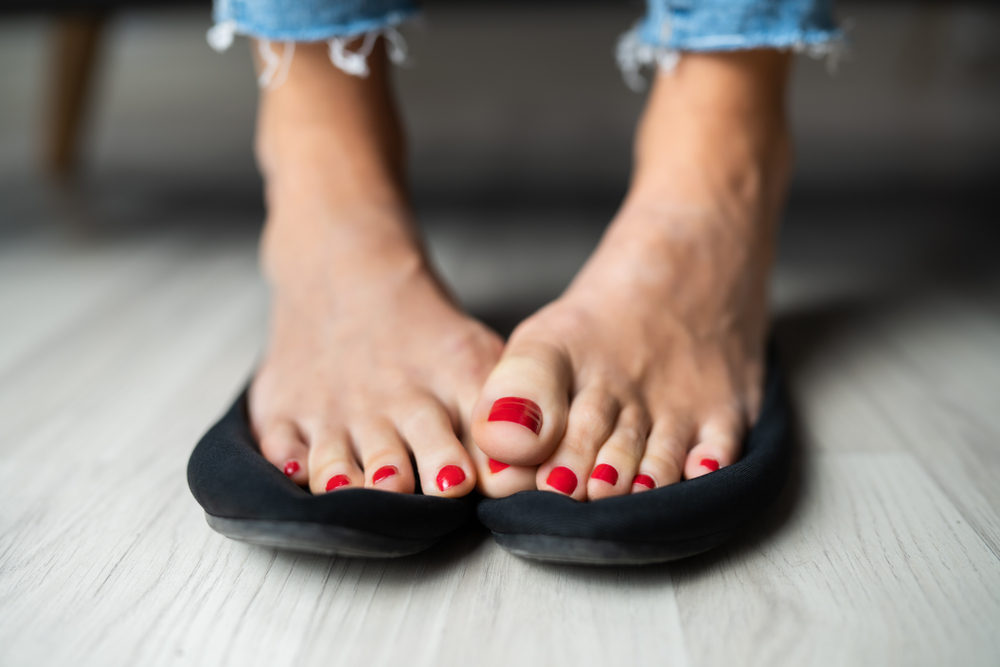Foot care is essential during the monsoon, as wet conditions increase the risk of foot problems like foot odour and fungal infections. Foot odour is primarily caused by sweat mixing with bacteria on the skin’s surface. This combination produces an unpleasant smell that can worsen in humid conditions. Fungal infections like athlete’s foot thrive in warm, moist environments, further contributing to foot odour.
Untreated foot odour not only causes unpleasant smells but can also lead to fungal infections like athlete’s foot. These infections may result in itching, redness, and skin peeling, potentially spreading to other body areas if ignored. Additionally, maintaining clean, dry, and moisturised feet helps prevent complications such as cracked heels and bacterial growth. Proper footwear selection and avoiding barefoot walks in damp areas are essential practices for maintaining foot health during the monsoon season.
Follow these strategies to combat foot odour and fungal infections:
Focus on foot hygiene: Effective foot hygiene involves daily washing with soap and water, particularly focusing on the areas between the toes. This routine helps remove sweat and bacteria that can contribute to foot odour and fungal infections. Washing with an antibacterial soap can further reduce the bacterial load on the skin, decreasing the risk of infections.
Dry feet thoroughly: Damp environments create ideal conditions for fungal growth. Always keep your feet dry, especially between the toes. Make it mandatory after bathing or exposure to moisture. Dermatologists recommend using talcum powder or antifungal powder on the feet to absorb excess moisture. It maintains dryness and reduces the risk of fungal infections.
Choose footwear made from natural materials: Opt for leather or canvas footwear as it promotes air circulation around the feet. This ventilation helps to evaporate sweat faster, preventing the buildup of moisture that encourages bacterial and fungal growth. According to podiatrists, breathable shoes are particularly beneficial during humid weather when sweat production increases.
Change socks everyday: Wearing clean socks made from moisture-wicking fabrics such as cotton or moisture-wicking blends helps keep feet dry. It’s essential to change socks regularly, especially if they become damp from sweat or environmental moisture. This practice reduces the likelihood of bacterial and fungal proliferation on the feet.
Ensure proper nail care: It involves trimming toenails straight across to prevent ingrown nails, which can create openings for bacterial and fungal infections. Moisturising the feet with a foot cream or lotion helps maintain skin integrity, preventing dry, cracked skin that can nurture bacteria. Dermatologists emphasise the importance of keeping the skin hydrated to support its natural barrier against infections.
Do not walk barefoot: Public areas like showers, locker rooms, and pool decks are common sources of fungal infections such as athlete’s foot. Podiatrists recommend wearing flip-flops or sandals to protect feet from direct contact with contaminated surfaces. This simple precaution significantly reduces the risk of picking up fungal pathogens that thrive in warm, moist environments.
Alternate between different pairs of shoes: Doing so, allows each pair to dry completely between uses. This rotation prevents the accumulation of moisture inside shoes, which can harbour bacteria and fungi. According to multiple studies, allowing shoes ample time to dry out helps maintain foot hygiene and reduces the risk of foot odour and infections.








